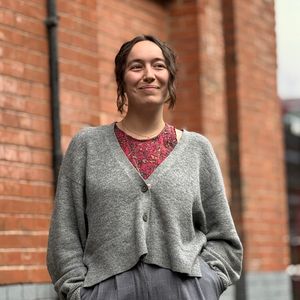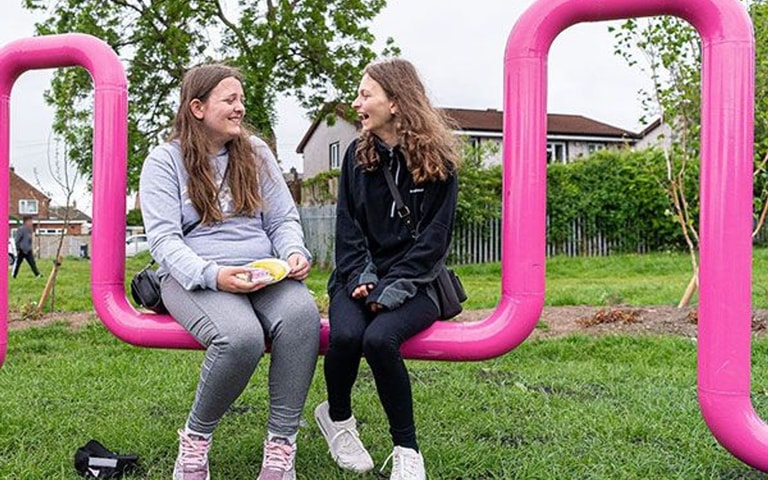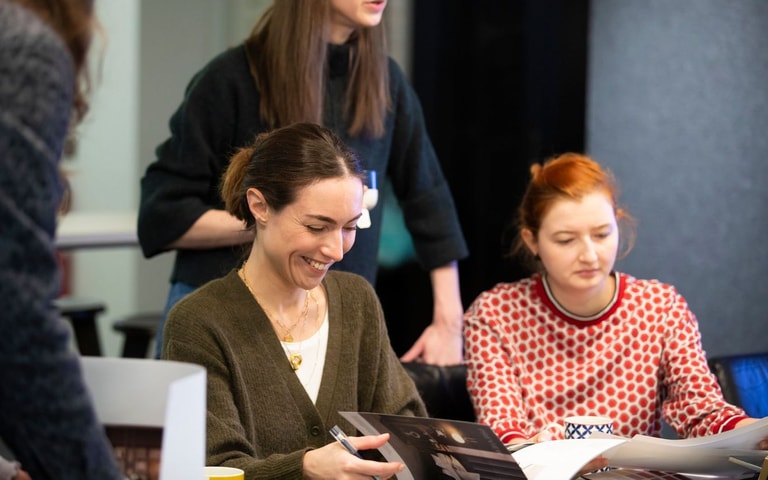Why planning for teenage girls means planning for everyone
When urban planning overlooks teenage girls, it misses half the population. Antonia May argues that designing inclusive public spaces means centring the needs of girls.


When I was studying urban planning at UCL in 2015, I had only one lecture about how planning can address the needs of women and girls. It was niche, buried deep inside a single module, and if you blinked, you missed it. But as a feminist, it struck a nerve with me.
How could planning claim to be about shaping places for everyone when it wasn’t even properly thinking about half the population? And if planners weren’t thinking about women and girls, who else were they ignoring?
Thankfully, the conversation has started to shift. When I was writing my dissertation in 2021, this was still seen as a ‘specialist’ issue. Now, it’s getting louder. More people are talking about it. More planners and designers are realising that public spaces should reflect the needs of teenage girls, too.
The simple truth is that public spaces, especially play spaces for teenagers, are still designed with boys in mind. You don’t have to look very far to see it. BMX tracks. Skate parks. Multi-use games areas (MUGAs) with three-metre-high fences. All brilliant facilities, but ones that teenage boys tend to dominate. Girls are often pushed out, not by official rules, but by an unspoken ‘who’s allowed here’ atmosphere. As Doreen Massey put it, when spaces aren’t explicitly regulated, the strongest group decides who belongs. And right now, that’s teenage boys.

The stats make for difficult reading. A survey by Plan UK in 2018 found that 38% of girls aged 14-21 had experienced verbal harassment in public spaces at least once a month. In 2012, 43% of young women in London reported sexual harassment in a public space. And just last year, the National Police Chiefs’ Council declared violence against women a national emergency. If you’re a teenage girl, the message is clear: public space isn’t safe, and it isn’t for you.
It matters because this isn’t just about fairness, although fairness is a very good reason on its own. It’s about health too. Teenage girls are becoming less active, with only 43% meeting recommended activity levels by Years 9-11 compared to 48% of boys. One in four girls report high levels of depressive symptoms by the age of 14. Whilst access to sports facilities is an important aspect, it’s also about feeling you can exist outdoors without pressure or judgement, having places to meet friends, hang out, be active or do nothing at all.
It’s also about legal obligations that too many councils are ignoring. Under the UN Convention on the Rights of the Child, every child, up to the age of 18, has the right to play. And under the Public Sector Equality Duty (PSED), promotion of equality must become part of public bodies’ core business and councils have a legal responsibility to reduce inequality between groups, including between girls and boys. This means our planning policies and decisions must consider the preferences of teenage girls. Yet most teenage play spaces are still designed with little or no thought about what girls actually want or need, indicating only modest application of the PSED.

We have to plan for the world we live in, and that means we need public spaces that actively invite girls in. My dissertation research identified that we need more variety that encourages sports, socialising and creativity for girls. This could include multiple seating options including clustered seating and swings away from younger children’s play areas and breaking down larger public spaces into smaller sub-spaces with multiple activities on offer. Girls told researchers they want somewhere safe, somewhere to do activities or nothing, somewhere that doesn’t stress their parents out. It’s not a big ask.
There are clear, practical steps that can help. We need mandatory teenage consultation built into every planning application involving parks, play spaces and public realm projects, making sure teenage girls are consulted directly, not just treated as a subgroup of ‘young people’. We need inclusive design briefs that require developers to create spaces offering a real mix of facilities; social seating, swings, hammocks and art walls so girls don’t have to compete to participate. We need to raise the bar on lighting and visibility standards to make sure spaces are genuinely safe, with good sightlines, passive surveillance and no hidden corners.
Design should consider spatial zoning, creating quieter, sociable areas alongside existing active zones like MUGAs and skateparks, allowing teenagers to choose how they engage. Councils should embed gender mainstreaming into policy so that considering girls' needs is seen as standard practice, not a specialist topic. Policy should directly reference what should be provided for teenage girls, while creative consultation techniques should be adopted alongside training for LPAs to equip planners with the right skillset to effectively engage with teenagers more generally, and teenage girls in particular. Teenage design panels could be established at borough level, giving teenage girls real power to shape planning decisions that affect their everyday spaces.
In Europe, cities like Vienna, Malmö and Umeå are leading the way, showing how to create parks where girls genuinely feel they belong. There have been small steps in London too with the Hackney Playspace SPD and the London Legacy Development Corporation’s ‘Creating places that work for Women and Girls’ Handbook for Local Authorities, Developers and Designers, which are excellent pioneer projects, and the work being done by Make Space for Girls. But we need a lot more. We need to make sure this isn’t just another topic that pops up once a year on International Women’s Day before being quietly shelved again.
As planners, designers, developers (and human beings) we have a responsibility to make teenage girls feel they belong in public spaces. That means proper engagement with teenage girls at early stage planning, innovative design, stronger policies, and a refusal to accept the tired old excuse that 'girls just don't want to use these spaces'. They do if we actively design and plan to make them feel welcome.
We have pilot projects happening now. We need to monitor them carefully, learn from them, and be brave enough to change things that don’t work. Teenage girls deserve better. And honestly? If we get it right for teenage girls, we’ll be getting it right for everyone.